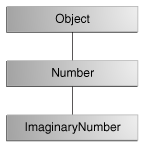메소드로부터 값을 리턴하기 Returning a Value from a Method
메소드가 다음을 하는 경우, 어떤 것이든 먼저 발생되는 경우, 메소드는 그것을 invoke한 코드를 리턴합니다
A method returns to the code that invoked it when it
- 메소드 안의 모든 명령문(statements)을 완료한 경우
return명령문에 도달한 경우, 또는- reaches a
returnstatement, 또는 인 경우 리턴 스테이드 먼드ㅔ - exception을 throw 한 경우(후에 다룸)
throws an exception (covered later),
메소드 선언 안에 메소드의 return type을 선언합니다.
메소드의 몸체 내에서, 값을 리턴하기 위하여 return 명령문을 사용합니다.
void 로 선언된 모든 메소드는 값을 리턴하지 않습니다.
void 로 선언된 모든 메소드는 return 명령문을 포함할 필요가 없지만, 포함할 수도 있습니다.
그러한 경우, return 명령문은 control flow block을 branch out 한 다음, 메소드를 exit하는데 사용될 수 있으며 아래와 같이 간단하게 사용됩니다:
whichever occurs first.
You declare a method's return type in its method declaration. Within the body of the method, you use the return statement to return the value.
Any method declared void doesn't return a value. It does not need to contain a return statement, but it may do so. In such a case, a return statement can be used to branch out of a control flow block and exit the method and is simply used like this:
return;
void로 선언된 메소드로부터 값을 리턴하려 하면 컴파일러 오류가 생깁니다.
void로 선언되지 않은 모든 메소드는 상응하는 리턴 값을 가진 return statement를 아래와 같이 포함해야 합니다.
If you try to return a value from a method that is declared void, you will get a compiler error.
Any method that is not declared void must contain a return statement with a corresponding return value, like this:
return returnValue;
리턴 값의 데이터타입은 메소드가 선언한 리턴 타입과 일치해야 하며; boolean을 리턴하도록 선언된 메소드 로부터 정수 값을 리턴할 수는 없습니다.객체관련하여 이 섹션에서 논의되었던 Rectangle Rectangle class내의 getArea() method는 integer를 리턴합니다:
The data type of the return value must match the method's declared return type; you can't return an integer value from a method declared to return a boolean.
The getArea() method in the Rectangle Rectangle class that was discussed in the sections on objects returns an integer:
// rectangle의 면적 계산 메소드 public int getArea() { return width * height; }
이 method는 expression width*height가 evaluate하는 정수를 리턴합니다.
getArea method는 primitive type을 리턴합니다.
method는 reference type도 리턴할 수 있습니다.
예를 들어, 프로그램에서 Bicycle objects을 조작하기 위하여, 아래와 같은 메소드를 가질 수도 있습니다:
This method returns the integer that the expression width*height evaluates to.
The getArea method returns a primitive type. A method can also return a reference type. For example, in a program to manipulate Bicycle objects, we might have a method like this:
public Bicycle seeWhosFastest(Bicycle myBike, Bicycle yourBike,
Environment env) {
Bicycle fastest;
// 각각의 자전거의 기어와 cadence, 그리고
// 환경(terrain 및 바람)이 주어진 상황에서
// 어떤 자전거가 빠른지 계산하기 위한 코드
return fastest;
}
클래스 또는 인터페이스 리턴하기 Returning a Class or Interface
이 섹션이 혼동되면 이것을 건너뛰고 인터페이스 및 상속에 관한 단원을 마친 다음 다시 돌아와도 됩니다.
If this section confuses you, skip it and return to it after you have finished the lesson on interfaces and inheritance.
whosFastest가 하는 것처럼 메소드가 그 리턴 타입으로 클래스 이름을 사용하는 경우, 리턴된 객체의 타입의 클래스는 리턴 타입의 서브클래스이거나, 또는 리턴 타입과 정확하게 같은 클래스이어야 합니다.
다음 그림에 예시된 대로 ImaginaryNumber가 java.lang.Number의 서브클래스인 클래스 계층구조를 갖고 있다고 상정하면, 이것은 순서에 따라 Object의 서브클래스 입니다.
When a method uses a class name as its return type, such as whosFastest does, the class of the type of the returned object must be either a subclass of, or the exact class of, the return type. Suppose that you have a class hierarchy in which ImaginaryNumber is a subclass of java.lang.Number, which is in turn a subclass of Object, as illustrated in the following figure.

The class hierarchy for ImaginaryNumber
Number을 리턴하도록 선언된 메소드가 있다고 가정합니다:
Now suppose that you have a method declared to return a Number:
public Number returnANumber() {
...
}
returnANumber method는 ImaginaryNumber를 리턴할 수 있지만 Object는 리턴할 수 없습니다.ImaginaryNumber는 Number의 서브클래스 이기 때문에 Number입니다.
하지만, Object는 반드시 Number 는 아니고— String 또는 다른 타입이 될 수도 있습니다.
메소드를 override 해서 원래 메소드의 서브클래스를 리턴하도록 아래와 같이 정의할 수 있습니다:
The returnANumber method can return an ImaginaryNumber but not an Object. ImaginaryNumber is a Number because it's a subclass of Number. However, an Object is not necessarily a Number — it could be a String or another type.
You can override a method and define it to return a subclass of the original method, like this:
public ImaginaryNumber returnANumber() {
...
}
covariant return type이라 불리는 이 기법은 return type이 subclass와 같은 방향으로 변형될 수 있음을 의미합니다.
This technique, called covariant return type, means that the return type is allowed to vary in the same direction as the subclass.
Note: You also can use interface names as return types. In this case, the object returned must implement the specified interface.
'Java 배우기' 카테고리의 다른 글
| Controlling Access to Members of a Class 클래스 멤버들에 대한 접근 제어 (0) | 2016.01.05 |
|---|---|
| Using the this Keyword 키워드 this 사용하기 (0) | 2016.01.05 |
| More on Classes 클래스 추가사항 (0) | 2016.01.05 |
| Using Objects 객체 사용하기 (0) | 2016.01.05 |
| Creating Objects 객체 생성하기 (0) | 2016.01.05 |
댓글